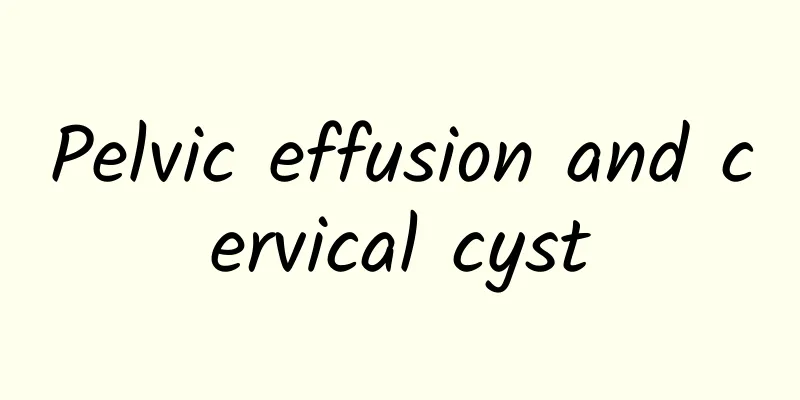How is pelvic inflammatory disease caused?

|
Pelvic inflammatory disease is a common scientific inflammation in female gynecology. Pelvic inflammatory disease refers to infectious diseases of the female pelvic reproductive organs, connective tissue around the uterus and pelvic peritoneum. Pelvic inflammatory disease mainly occurs in women after sexual activity, menstruation or gynecological surgery. Most infections occur when women have endocrine disorders and decreased immunity, the local defense function of the reproductive tract is damaged, and pathogens invade. Acute pelvic inflammatory disease may cause fever, lower abdominal pain, menstrual changes, etc. Repeated attacks of chronic pelvic inflammatory disease can cause low back pain, severe increase in vaginal discharge, and even ectopic pregnancy. Pelvic inflammatory disease must be treated by a regular gynecological hospital. What are the symptoms of pelvic inflammatory disease? Pelvic inflammatory disease is a common infectious disease in women. It refers to inflammation of the female upper reproductive tract and the surrounding connective tissue. Common symptoms of pelvic inflammatory disease are lower abdominal pain, fever, and body temperature that can sometimes reach above 38 degrees Celsius. In severe cases, chills, high fever, headache, loss of appetite, and increased vaginal discharge may occur. During menstruation, symptoms such as increased menstrual flow and prolonged menstruation may occur. If pelvic inflammatory disease and peritonitis occur, digestive system symptoms such as nausea, vomiting, abdominal distension, and diarrhea will occur. If pelvic inflammatory disease is not treated in time, pelvic abscesses will form, which will irritate the bladder and rectum and cause symptoms such as frequent urination, urgency, diarrhea, urgency, and difficulty in defecation. Pelvic inflammatory disease examination Most pelvic inflammatory examinations usually involve going to the hospital for a color Doppler ultrasound examination. A gynecological diagnosis can confirm the diagnosis, and a color Doppler ultrasound examination can show a large amount of fluid accumulation in the pelvic cavity. At this time, a gynecological examination may show uterine tenderness, rebound pain, etc., which is generally pelvic inflammatory disease. If it is the acute stage of pelvic inflammation, the body temperature and fever will increase. At this time, most conditioning can be symptomatically treated through intravenous infusion and other methods. The occurrence of pelvic inflammation cannot rule out retrograde infection of vaginal inflammation. At this time, you can generally go to the hospital for symptomatic treatment based on the examination results. If a clear diagnosis of pelvic inflammation is made, symptomatic conditioning can be carried out through oral Chinese medicine or Chinese patent medicine, or Chinese medicine enema plus physical therapy. |
<<: What causes drooling in the elderly?
>>: Classification and hazards of pelvic inflammatory disease
Recommend
What does multiple uterine fibroids mean? What is the cause of multiple uterine cysts?
What does multiple uterine fibroids mean? What ar...
What are the consequences of premature ovarian failure?
Premature ovarian failure seriously affects the n...
What should I do if I have pelvic inflammatory disease and cannot live without anti-inflammatory drugs every month?
What should I do if I have pelvic inflammatory di...
Precautions for endometrial thickness
The condition of too thick endometrium in people&...
How do symptoms of adnexitis usually manifest?
Adnexitis is a common gynecological inflammation ...
How to relieve the pain of lymphadenitis in children's abdomen
When a child has abdominal lymphadenitis and pain...
Ovarian cyst examination method revealed
The ovaries are women's private gardens and b...
Drink green tea to lose weight and drink cucumber juice for cramps? 10 common beverages with unexpected benefits
You should drink water to quench your thirst and ...
Endometriosis affects hormone balance
Endometriosis is a common disease among women. En...
What are the symptoms of cervical cancer in women? What are some common misunderstandings about cervical cancer in women?
There are many types of cancer, and it is also a ...
Does drinking brown sugar water have any effect on pelvic inflammatory disease?
Pelvic inflammatory disease refers to an inflamma...
What to do after menopause
What to do after menopause? Amenorrhea is a commo...
Pay attention to details in daily care of endometrial tuberculosis
For many diseases, treatment knowledge plays a ro...
How to cure vulvar leukoplakia?
How to cure vulvar leukoplakia? Vulvar leukoplaki...
What are the treatments for uterine fibroids? Dietary conditioning methods for uterine fibroids
What should I do if I have uterine fibroids? Uter...









